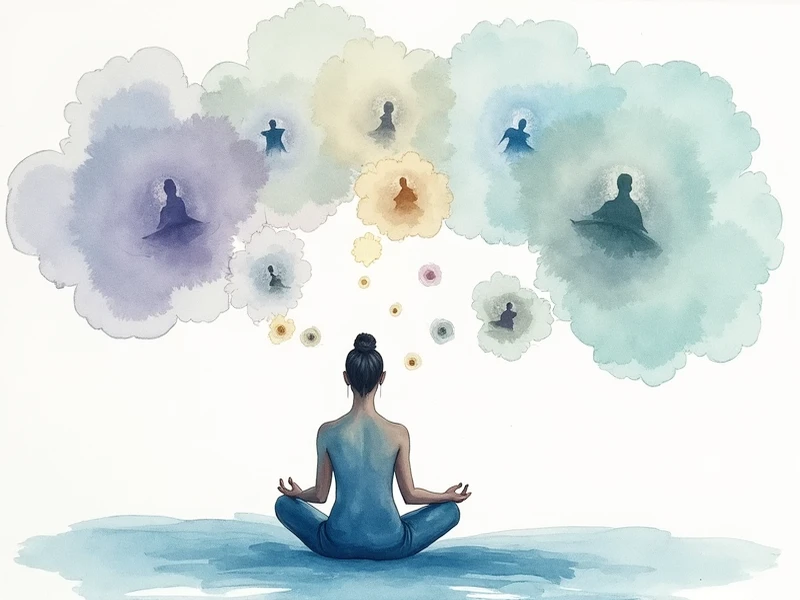Cognitive Techniques in CBT: A Comprehensive Guide

Cognitive Behavioral Therapy (CBT) has revolutionized the field of mental health by providing practical tools to tackle anxiety and irrational thought patterns. At BrainTalking, we understand how overwhelming anxiety can feel and the transformative power of CBT techniques in overcoming these challenges. This guide explores the most impactful cognitive techniques in CBT, including methods like cognitive restructuring and mindfulness, to help reframe negative thinking and develop healthier perspectives. Let’s dive into how these strategies work and how you can apply them effectively.

Understanding Cognitive Behavioral Therapy (CBT)
CBT is a widely used psychotherapy method known for its evidence-based approach to addressing mental health challenges. Whether you’re battling anxiety, depression, or another issue, CBT equips you with tools to identify thought distortions and replace them with healthier, more balanced beliefs.
The Role of Cognitive Techniques in CBT
Cognitive techniques in CBT help to interrogate, challenge, and refine negative or distorted thought processes. These techniques focus specifically on the mental patterns driving problematic emotions and behaviors. For example, if you’re grappling with depression in men—a common problem that often stems from self-critical thought patterns—CBT cognitive techniques aim to reshape your mindset toward constructive thinking.
Why Cognitive Techniques Are Effective
What makes CBT cognitive techniques so powerful is their grounding in practical steps. They don’t merely address emotional symptoms but go deeper, targeting the cognitive mechanisms that fuel distress. By teaching you how to regulate your thoughts, these techniques pave the way for healthier habits, reduced anxiety, and improved emotional stability.
Top CBT Cognitive Techniques for Anxiety Relief
If anxiety has ever gripped you, you’re not alone. CBT offers a variety of techniques tailored specifically to help manage those anxious moments when your mind spirals with worry or catastrophic thinking. Here are seven CBT cognitive techniques you can learn and practice today.
Challenging Negative Thoughts (CBT Cognitive Techniques)
Negative thoughts often appear unchallenged, making them seem valid and inevitable. However, actively questioning these beliefs can transform your perspective. This CBT cognitive technique involves identifying recurring thought patterns and assessing their validity.
For example, imagine you’re anxious about giving a presentation, thinking, “”I’ll definitely mess up and embarrass myself.”” To apply this technique, ask yourself, “”What evidence do I have that supports this belief?”” Reflecting on past presentations that have gone well can help dismantle exaggerated fears.
Examining Evidence (CBT Cognitive Techniques)
Anxiety often stems from assumptions rather than facts. Examining evidence encourages a fair evaluation of both supportive and contradictory proof for your beliefs. If you’re nervous about meeting new people because you believe, “”No one will like me,”” this technique helps you recall instances where you’ve successfully connected with others. When you compare your fears to actual evidence, you’ll often find the latter outweighs the former.
Finding Alternative Perspectives (Cognitive Restructuring Techniques in CBT)
Another valuable tool in CBT is cognitive restructuring, where you actively challenge assumptions and consider different viewpoints. For example, if you’re feeling nervous about a job interview, you may think, “”I have to be perfect to succeed.”” Reframing this thought helps you realize that growth potential and relevant skills are what matter most—not achieving an impossible standard of perfection.
Mindfulness and Grounding (Cognitive Techniques CBT)
Mindfulness in CBT focuses on immersing yourself in the present moment, helping to ease intrusive thoughts and emotions. Simple practices, such as focusing on your breathing or grounding yourself by observing your surroundings, can bring immediate relief during moments of heightened anxiety. When you feel the pull of a racing mind, turn your attention to each inhale and exhale, cultivating calm in the chaos.
Progressive Muscle Relaxation (Cognitive Techniques Used in CBT)
Sometimes, anxiety manifests physically through tense muscles and a racing heart. Progressive muscle relaxation offers a physical pathway to mental calm by deliberately tensing and relaxing each muscle group. Start from your toes and gradually move upward to your head, visualizing tension leaving your body. This technique not only soothes your body but helps clear your mind, promoting an overall sensation of peace.
Behavioral Exposure (CBT Cognitive Techniques)
Avoidance of anxiety triggers often reinforces fears, making situations seem scarier over time. Behavioral exposure is a CBT technique designed to confront these fears gradually. For instance, if you experience social anxiety, begin with smaller gatherings and slowly progress to larger and more challenging ones. This approach desensitizes you to triggers over time, helping you regain control in previously uncomfortable settings.
Cognitive Restructuring (Cognitive Techniques in CBT)
A cornerstone of CBT, cognitive restructuring transforms distorted thought patterns into balanced ones. For instance, if you consistently expect the worst-case scenario, this technique challenges you to reframe your thoughts. Instead of thinking, “”I can’t handle this,”” shift toward, “”I may struggle initially, but I’ll adapt and improve.”” Over time, cognitive restructuring builds resilience and confidence, crucial for long-term success in managing anxiety.
Integrating and Personalizing Cognitive Techniques in CBT
No therapy is one-size-fits-all. The key to success lies in finding CBT cognitive techniques that resonate with your needs, personality, and circumstances.
Tailored Approaches to Anxiety Relief
Understanding which techniques work best for you requires exploration and patience. If mindfulness feels calming while behavioral exposure feels overwhelming, focus on practices you can comfortably integrate into your daily routine. Start small, recognizing that growth is a gradual process.

The Importance of Consistent Practice
Mastery comes from repetition. Whether you’re restructuring thoughts or attempting progressive muscle relaxation, consistent practice is essential. Familiarity builds confidence, ensuring these techniques become second nature when anxiety strikes.
Developing Resilience
Cognitive techniques not only reduce anxiety but also foster resilience necessary for daily challenges. By confronting fears and grounding yourself in realistic outcomes, you’ll cultivate emotional strength that equips you to navigate life more effectively.

Conclusion: Mastering Cognitive Techniques CBT
From charting negative thoughts to practicing mindfulness and grounding exercises, CBT offers an arsenal of cognitive techniques to manage anxiety and enhance emotional well-being. Remember, managing anxiety isn’t a destination—it’s a journey. With time, patience, and practice, these techniques can become an empowering part of your routine.
At BrainTalking, we encourage you to keep exploring, challenging, and growing. Use these cognitive techniques in CBT to not only calm anxiety but reshape thought patterns for a brighter emotional future. Let this guide inspire you to make that shift, one small step at a time.
Q&A Section
What is cognitive restructuring, and how is it different from challenging negative thoughts?
Cognitive restructuring is a structured process within CBT that aims to identify and transform distorted or irrational thought patterns into balanced perspectives. It’s broader and more intentional than simply challenging negative thoughts, which acts as a short-term method of disputing specific beliefs during moments of distress. Cognitive restructuring helps you form lasting mental habits for accurate reasoning across various situations.
How often should you practice CBT cognitive techniques?
The frequency depends on personal needs. Many individuals benefit from daily practice, whether through mindfulness, evidence evaluation, or progressive muscle relaxation. Regular use solidifies these techniques into habitual responses, ensuring they’re readily accessible when you need them most.
Takeaways: Practical Strategies for Relief
- Learn to examine evidence and reframe negative thought patterns.
- Remember that resilience builds through consistent practice.
- Tailor techniques to your needs for long-term success.
- Use cognitive restructuring for lasting changes in mindset.
These actionable insights can guide you toward calm, clarity, and emotional balance.
Additional Resources:
- Explore more on depression in men and how CBT cognitive techniques address self-critical thought patterns.




